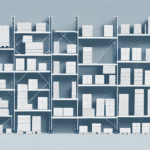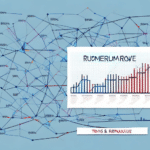Understanding Customer Acquisition Cost (CAC) in E-Commerce
Customer Acquisition Cost (CAC) is a vital metric for e-commerce businesses looking to scale effectively. It represents the total cost incurred to acquire a new customer, encompassing marketing, advertising, and sales expenses. By accurately measuring CAC, businesses can optimize their strategies to attract customers more efficiently and improve overall profitability.
Why CAC Matters for E-Commerce Operations
Monitoring CAC is essential for several reasons:
- Budget Allocation: Helps in determining how much to invest in different marketing channels.
- Profitability Analysis: Ensures that the cost of acquiring customers does not exceed the revenue they generate.
- Strategic Planning: Aids in making informed decisions about scaling and resource allocation.
Understanding CAC in relation to Customer Lifetime Value (CLV) is crucial. A common benchmark is to aim for a CLV that is at least three times the CAC, ensuring sustainable growth.
Calculating Customer Acquisition Cost: A Step-by-Step Guide
Calculating CAC involves a straightforward formula:
CAC = Total Marketing and Advertising Costs / Number of Customers Acquired
For instance, if you spend $15,000 on marketing in a quarter and acquire 150 customers, your CAC would be $100. This calculation should be performed regularly to monitor trends and adjust strategies accordingly.
It's also beneficial to break down CAC by individual marketing channels to identify which are the most cost-effective. Tools like Google Analytics and HubSpot can assist in tracking these metrics.
Factors Influencing CAC in E-Commerce
Several elements can impact CAC, including:
- Industry Competition: Highly competitive markets often have higher advertising costs.
- Target Audience: Niche audiences may require more specialized marketing efforts.
- Marketing Channels: Different channels (e.g., social media, email marketing, PPC) have varying costs and effectiveness.
- Conversion Rates: Higher conversion rates can lower CAC by maximizing the value of each marketing dollar spent.
Additionally, factors like website user experience and the quality of product offerings play a role in influencing CAC.
Strategies to Reduce CAC and Improve ROI
Implementing effective strategies can help lower CAC and enhance return on investment (ROI):
- Optimize SEO: Improving search engine rankings can drive organic traffic, reducing reliance on paid channels.
- Leverage Content Marketing: High-quality content attracts and engages potential customers cost-effectively.
- Enhance Conversion Rates: A/B testing and user experience improvements can increase the percentage of visitors who convert into customers.
- Implement Referral Programs: Encouraging existing customers to refer new ones can lower acquisition costs significantly.
Investing in customer retention is equally important. Retaining customers is generally more cost-effective than acquiring new ones, and it contributes to a higher CLV.
Measuring the Effectiveness of CAC Reduction Strategies
To ensure that your strategies are effective in lowering CAC, regularly track key performance indicators (KPIs) such as:
- Conversion Rates: Monitor changes in the percentage of visitors who make a purchase.
- Cost Per Click (CPC): Analyze the cost efficiency of your paid advertising campaigns.
- Return on Ad Spend (ROAS): Evaluate the revenue generated from each dollar spent on advertising.
Utilizing data analytics tools like Google Analytics and Hootsuite can provide valuable insights into the performance of your marketing efforts.
The Role of Customer Lifetime Value (CLV) in Calculating CAC
Understanding CLV is essential when evaluating CAC. CLV estimates the total revenue a customer is expected to generate over their relationship with your business. A high CLV allows for a higher CAC, as the long-term value justifies the initial acquisition cost.
By aligning CAC with CLV, businesses can ensure sustainable growth. Tools like Klaviyo can help calculate and analyze CLV effectively.
Best Practices for Managing CAC in E-Commerce
Adhering to best practices can help maintain a healthy CAC:
- Regular Monitoring: Frequently review CAC to identify trends and make timely adjustments.
- Diversify Marketing Channels: Avoid relying on a single channel to spread risk and capitalize on multiple avenues for customer acquisition.
- Invest in Quality Content: Content that educates and engages can attract high-quality leads at a lower cost.
- Focus on Customer Experience: Enhancing the overall customer experience can lead to higher conversion rates and lower CAC.
Staying informed about industry trends and continuously optimizing your strategies are key to maintaining an efficient CAC.
Conclusion
Customer Acquisition Cost is a critical metric for e-commerce businesses aiming to grow sustainably. By accurately measuring CAC, understanding the factors that influence it, and implementing effective strategies to reduce it, businesses can enhance their profitability and achieve long-term success. Balancing CAC with Customer Lifetime Value ensures that acquisition efforts contribute positively to the bottom line.




















